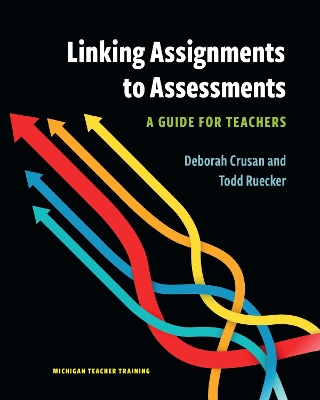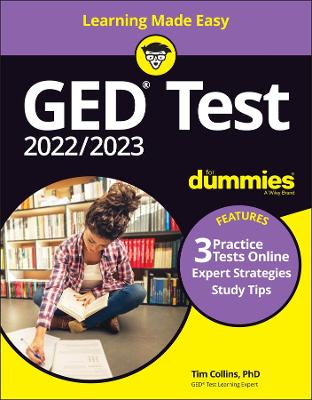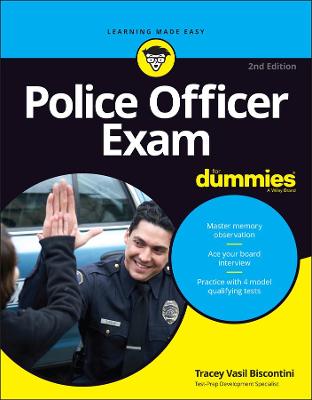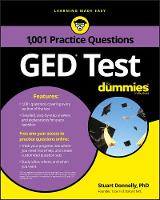Educational Testing and Measurement
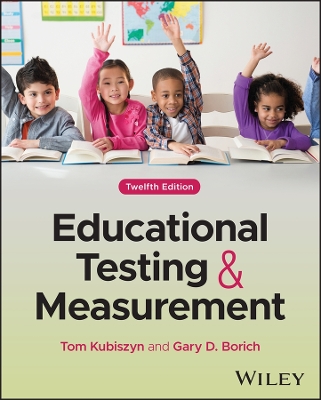 -10%
portes grátis
-10%
portes grátis
Educational Testing and Measurement
Kubiszyn, Tom; Borich, Gary D.
John Wiley & Sons Inc
01/2024
464
Mole
Inglês
9781119931775
15 a 20 dias
Tests and Assessments: Their Potential 2
Test, Assessment, or Assessment Process? 3
Is It a Test or an Assessment? 3
The Assessment Process 4
Tests are Only Tools: A Video Beats a Photo 5
Why We Developed This Text: Improving Assessment Literacy and Enhancing Test Usefulness 6
Assessment Literacy 6
Enhancing Test Usefulness 7
Technical Adequacy (Is It Well-constructed?) 7
Test User Competency 9
Matching the Test's Intended Purposes: Specific Content and Timing (Summative, Formative and Interim Assessments) 9
Matching the Test to the Population 13
Test Results and Diversity Considerations 15
Types of Tests/Assessments 16
Objective, Essay, and Performance/Portfolio Tests/Assessments 16
Teacher-Made and Standardized Tests 17
Norm-Referenced Tests (NRTs) and Criterion-Referenced Tests (CRTs) 18
Curriculum-Based Measurements (CBMs) 18
Effects on the Classroom Teacher 19
About the Text 21
What If You Are "No Good in Math"? 22
Summary 22
For Discussion and Practice 23
Chapter 2 National Developments: Impact on Classroom Assessment and Measurement 24
COVID-19: Impact on K-12 Education 26
Federal and State Education Initiatives: A Brief Review 26
Education Reform Initiatives 27
Regular Education Reform 27
Special Education Reform 29
Regular and Special Education Reform Merge: IDEIA, NCLB and ESSA 30
Standards-Based Reform 31
Current Status of the Common Core State Standards (ccss) 34
Updates About Other Trends 34
Online and Computer-Adaptive Achievement Testing and COVID-19 35
Globalization and International Competitiveness 36
Competency Testing for Teachers 36
Teacher Evaluation Based on Student Test Scores: Value-Added Models (VAM) 37
Increased Interest from Professional Groups 38
A Professional Association-Book Publisher Information Initiative 38
Summary 39
For Discussion and Practice 40
Chapter 3 the Whole Child, Mtss, and Rti 42
What Is the "Whole Child" Approach? 43
What Is MTSS? 44
The Three Tiers of MTSS 44
What Is the History of MTSS? 46
Is MTSS Just Another Fad? 46
What Is RTI? 47
How New Is RTI? 47
How Is RTI Supposed to Help Students and Schools? 48
RTI Definitions, Components, and Approaches 49
RTI Definitions 49
RTI Components 49
Examples: Progress Monitoring with CBM Probes 53
RTI Approaches 55
Standard Protocol Approach (SP) 55
Problem-Solving Approach (PS) 56
Some Potential Benefits of RTI 56
RTI: The Promise and Some Controversies 57
Technical Issues: Reliability, Validity Evidence, and Fairness 58
Implementation Issues 58
Summary 59
For Discussion and Practice 61
Chapter 4 Why and How We Test: Educational Decision Making 62
Assessment, Accountability, and the Classroom Teacher 64
Formative and Summative Assessments: Special Learners in the Regular Curriculum 64
Types of Educational Decisions 66
Instructional Decisions 66
Grading and Marking Decisions 66
Diagnostic Decisions 67
Selection Decisions 68
Placement Decisions 68
Counseling and Guidance Decisions 68
Program or Curriculum Decisions 68
Administrative Policy Decisions 68
HowWeMeasure:APinchofSalt 69
"Pinching" in the Classroom 70
"What" to Measure: The Purpose of Testing 71
How to Measure 72
Written Test Varieties 72
Summary 73
For Discussion and Practice 74
Chapter 5 Norm- and Criterion-referenced Tests, Content Validity Evidence and Goals And Objectives 75
Norm-Referenced and Criterion-Referenced Tests 76
What Type of Information Do You Need? 76
What Is the Problem? 78
Comparing NRTs and CRTs 80
Differences In The Construction of NRTs and CRTs 81
NRTs, CRTs, and Linguistic and Cultural Diversity 81
NRTs, CRTs, and Validity Evidence 83
A Three-Stage Model of Classroom Measurement 84
Why Objectives? Why Not Just Write Test Items? 85
Where Do Goals Come From? 87
Behavioral and Expressive Objectives and General Goals 88
Can Instructional Objectives Make a Teacher's Job Easier? 90
Summary 92
For Discussion and Practice 93
Chapter 6 Assessing Learning Outcomes 95
Writing Instructional Objectives 96
Identifying Learning Outcomes 96
Identifying Observable and Directly Measurable Learning Outcomes 97
Stating Conditions 98
Stating Criterion Levels 98
Keeping It Simple and Straightforward 99
Matching Test Items to Instructional Objectives 100
Taxonomy of Educational Objectives 102
Cognitive Domain 102
Affective Domain 105
The Psychomotor Domain 107
The Test Blueprint 108
Content Outline 109
Categories 110
Number of Items 110
Functions 111
Summary 112
For Discussion and Practice 113
Chapter 7 Writing Objective Test Items 115
Which Format? 116
True-False Items 117
Suggestions for Writing True-False Items 119
Matching Items 120
Faults Inherent in Matching Items 120
Suggestions for Writing Matching Items 123
Multiple-Choice Items 123
Higher-Level Multiple-Choice Questions 128
Suggestions for Writing Multiple-Choice Items 132
Completion Items 132
Suggestions for Writing Completion Items 134
Gender and Racial/Ethnic Bias in Test Items 135
Guidelines for Writing Test Items 136
Advantages and Disadvantages of Different Objective Item Formats 137
True-False Tests 137
Matching Tests 138
Multiple-Choice Tests 138
Completion Tests 138
Summary 139
For Discussion and Practice 139
Chapter 8 Writing Essay Test Items 141
What Is An Essay Item? 142
Essay Items Should Measure Complex Cognitive Skills or Processes 143
Essay Items: Extended or Restricted Response 144
Examples of Restricted Response Essays 145
Pros and Cons of Essay Items 147
Advantages of the Essay Item 147
Disadvantages of the Essay Item 147
Suggestions for Writing Essay Items 148
Scoring Essay Questions 149
Scoring Extended Response and Higher-Level Questions 151
General Essay Scoring Suggestions 155
Assessing Knowledge Organization 156
Open-Book Questions and Exams 158
Some Open-Book Techniques 159
Guidelines for Planning Essays, Knowledge Organization, and Open-Book Questions and Exams 162
Summary 163
For Discussion and Practice 164
Chapter 9 Performance-based Assessment 165
Debriefing 217
Debriefing Guidelines 217
The process of Evaluating Classroom Achievement 218
Summary 219
For Discussion and Practice 221
Performance Tests: Direct Measures of Competence 166
Performance Tests Can Assess Processes and Products 166
Performance Tests Can Be Embedded in Lessons 167
Performance Tests Can Assess Affective and Social Skills 167
Developing Performance Assessments for Your Learners 169
Step 1: Deciding What to Test 169
Step 2: Designing the Assessment Context 171
Step 3: Specifying the Scoring Rubrics 174
Step 4: Specifying Testing Constraints 179
A Final Word 180
Summary 181
For Discussion and Practice 182
Chapter 10 Portfolio Assessment 183
What Is a Portfolio? 184
Purposes for the Portfolio 184
Ensuring the Validity Evidence of the Portfolio 185
Developing Portfolio Assessments 186
Step 1: Deciding on the Purposes for a Portfolio 186
Step 2: Identifying Relevant Skills and Dispositions 186
Step 3: Deciding Who Will Plan the Portfolio 186
Step 4: Deciding Which Products to Put in the Portfolio and How Many Samples of Each Product 187
Step 5: Building the Portfolio Rubrics 188
Step 6: Developing a Procedure to Aggregate All Portfolio Ratings 193
Step 7: Determining the Logistics 194
Summary 197
For Discussion and Practice 198
Chapter 11 Administering, Analyzing, And Improving Teacher-made Tests 199
Assembling, Administering, and Scoring the Test 200
Packaging the Paper-and-Pencil or Online Test 200
Check Test Directions 201
Proofread the Test 202
Reproducing the Test 202
Administering the Test 202
Scoring the Test 204
Analyzing the Test 205
Quantitative Item Analysis 205
Qualitative Item Analysis 212
Item Analysis Modifications for the Criterion-Referenced Test 212
Chapter 12 Marks and Marking Systems 222
What Is the Purpose of a Mark? 223
Why Be Concerned about Marking? 223
What Should a Mark Reflect? 223
Marking Systems 225
Types of Comparisons 225
Types of Symbols 229
Combining and Weighting The Components of a Mark 230
Who Is the Better Teacher? 231
Combining Grades into a Single Mark 232
Practical Approaches to Equating Before Weighting in the Busy Classroom 235
Front-End Equating 235
Back-End Equating 237
Summary 238
For Discussion and Practice 239
Chapter 13 Summarizing Data and Measures Of Central Tendency 240
What Are Statistics? 241
Why Use Statistics? 242
Tabulating Frequency Data 242
The List 243
The Simple Frequency Distribution 244
The Grouped Frequency Distribution 245
Steps in Constructing a Grouped Frequency Distribution 246
Graphing Data 248
The Bar Graph, or Histogram 249
The Frequency Polygon 250
The Smooth Curve 252
Measures of Central Tendency 255
The Mean 255
The Median 257
The Mode 261
The Measures of Central Tendency in Various Distributions 262
Summary 264
For Discussion and Practice 265
Chapter 14 Variability, the Normal Distribution, and Converted Scores 267
The Range 268
The Semi-Interquartile Range (SIQR) 269
The Standard Deviation 270
The Deviation Score Method for Computing the Standard Deviation 273
The Raw Score Method for Computing the Standard Deviation 274
The Normal Distribution 276
Properties of the Normal Distribution 277
Converted Scores 279
z-Scores 282
T-Scores 286
Summary 287
For Discussion and Practice 287
Chapter 15 Correlation 289
The Correlation Coefficient 291
Strength of a Correlation 291
Direction of a Correlation 291
Scatterplots 292
Where Does r Come From? 294
Causality 295
Other Interpretive Cautions 296
Summary 299
For Discussion and Practice 300
Chapter 16 Validity Evidence 301
Establishing Validity Evidence: Contrasting Approaches 302
Do We Have to Evaluate Validity Evidence? 303
When Should Validity Evidence Be Evaluated? 303
Types of Validity Evidence 304
Content Validity Evidence 304
Criterion-Related Validity Evidence 305
Construct Validity Evidence 307
What Have We Been Saying? A Review 307
Interpreting Validity Coefficients 310
Content Validity Evidence 310
Concurrent and Predictive Validity Evidence 310
Summary 314
For Discussion and Practice 315
Chapter 17 Reliability 316
Methods of Estimating Score Reliability Evidence 317
Test-Retest or Stability 317
Alternate Forms or Equivalence 318
Internal Consistency 318
Interpreting Reliability Coefficients 321
Summary 324
For Discussion and Practice 325
Chapter 18 Accuracy and Error 327
Error-What Is It? 328
The Standard Error of Measurement 329
Using the Standard Error of Measurement 330
More Applications 333
Standard Deviation or Standard Error of Measurement? 335
Why All the Fuss About Error? 336
Error Within Test-Takers 336
Error Within the Test 336
Error in Test Administration 337
Error in Scoring 337
Sources of Error Influencing Various Reliability Coefficients 338
Test-Retest 338
Alternate Forms 338
Internal Consistency 339
Band Interpretation 340
Steps: Band Interpretation 341
List Data 341
Determine S m 341
Add and Subtract S m 341
Graph the Results 341
Interpret the Bands 342
AFinalWord 344
Summary 344
For Discussion and Practice 346
Chapter 19 Standardized Tests 347
Standardized, High-Stakes Testing: A Brief History 348
What Is a Standardized Test? 349
Do Test Stimuli, Administration, and Scoring Have to Be Standardized? 350
Standardized Testing: Effects of Accommodations and Alternative Assessments 351
Uses of Standardized Achievement Tests 352
Will Performance and Portfolio Assessment Make Standardized Tests Obsolete? 352
Administering Standardized Tests 353
Types of Scores Offered for Standardized Achievement Tests 355
Grade Equivalents 355
Age Equivalents 356
Percentile Ranks 357
Standard Scores 357
Advantages and Disadvantages of Standard or Scale Scores 359
The Norms Table 359
Interpreting a Norms Table 360
Summary 362
For Discussion and Practice 363
Chapter 20 Interpreting Summative Standardized Test Scores 365
Test-Related Factors That Affect Interpretation 366
Does the Test Have Acceptable Score Reliability and Criterion-related Validity Evidence? 366
Does the Test Have Content Validity Evidence? 367
Is the Norm Group an Appropriate Match to Your Class? 367
Were Standardized Administration Procedures Followed? 368
Student-Related Factors That Affect Interpretation 369
Linguistic and Cultural 369
Age, Gender, and Development 370
Motivational 371
Emotional State on the Test Day 371
Disabilities 371
Aptitude 371
Aptitude-Achievement Discrepancies 374
Interpreting Standardized Tests: Parent-Teacher Conferences and Educational Decision Making 377
An Example: Pressure to Change an Educational Placement 377
Interpreting Standardized Tests: Score Reports From Publishers 381
More Examples: Interpreting Reports from Test Publishers 387
Scenario #1: Based on Figure 20.5 387
Scenario #2: Based on Figure 20.6 387
Authors' Responses 387
Summary 389
For Discussion and Practice 389
Chapter 21 Types of Standardized Tests 391
Summative Standardized Achievement Tests 392
Achievement Test Batteries, or Survey Batteries 393
Single-Subject Achievement Tests 394
Diagnostic Achievement Tests 394
Standardized Academic Aptitude Tests 394
The History of Academic Aptitude Testing 395
Stability of IQ Scores 396
What Do IQ Tests Predict? 396
Individually Administered Academic Aptitude Tests 397
Group-Administered Academic Aptitude Tests 398
Standardized Personality Assessment Instruments 398
What Is Personality? 399
Objective Personality Tests 400
Projective Personality Tests 401
Summary 401
For Discussion and Practice 402
Chapter 22 In the Classroom: a Summary Dialogue 403
Part 1: The New Teacher and the Experienced Teacher 403
Part 2: Another Experienced Teacher Joins in 407
Part 3: The Principal Joins in 408
Appendix a Math Skills Review A- 1
Appendix B Answers for Discussion Or Practice Questions A- 7
References R- 1
Index I- 1
Tests and Assessments: Their Potential 2
Test, Assessment, or Assessment Process? 3
Is It a Test or an Assessment? 3
The Assessment Process 4
Tests are Only Tools: A Video Beats a Photo 5
Why We Developed This Text: Improving Assessment Literacy and Enhancing Test Usefulness 6
Assessment Literacy 6
Enhancing Test Usefulness 7
Technical Adequacy (Is It Well-constructed?) 7
Test User Competency 9
Matching the Test's Intended Purposes: Specific Content and Timing (Summative, Formative and Interim Assessments) 9
Matching the Test to the Population 13
Test Results and Diversity Considerations 15
Types of Tests/Assessments 16
Objective, Essay, and Performance/Portfolio Tests/Assessments 16
Teacher-Made and Standardized Tests 17
Norm-Referenced Tests (NRTs) and Criterion-Referenced Tests (CRTs) 18
Curriculum-Based Measurements (CBMs) 18
Effects on the Classroom Teacher 19
About the Text 21
What If You Are "No Good in Math"? 22
Summary 22
For Discussion and Practice 23
Chapter 2 National Developments: Impact on Classroom Assessment and Measurement 24
COVID-19: Impact on K-12 Education 26
Federal and State Education Initiatives: A Brief Review 26
Education Reform Initiatives 27
Regular Education Reform 27
Special Education Reform 29
Regular and Special Education Reform Merge: IDEIA, NCLB and ESSA 30
Standards-Based Reform 31
Current Status of the Common Core State Standards (ccss) 34
Updates About Other Trends 34
Online and Computer-Adaptive Achievement Testing and COVID-19 35
Globalization and International Competitiveness 36
Competency Testing for Teachers 36
Teacher Evaluation Based on Student Test Scores: Value-Added Models (VAM) 37
Increased Interest from Professional Groups 38
A Professional Association-Book Publisher Information Initiative 38
Summary 39
For Discussion and Practice 40
Chapter 3 the Whole Child, Mtss, and Rti 42
What Is the "Whole Child" Approach? 43
What Is MTSS? 44
The Three Tiers of MTSS 44
What Is the History of MTSS? 46
Is MTSS Just Another Fad? 46
What Is RTI? 47
How New Is RTI? 47
How Is RTI Supposed to Help Students and Schools? 48
RTI Definitions, Components, and Approaches 49
RTI Definitions 49
RTI Components 49
Examples: Progress Monitoring with CBM Probes 53
RTI Approaches 55
Standard Protocol Approach (SP) 55
Problem-Solving Approach (PS) 56
Some Potential Benefits of RTI 56
RTI: The Promise and Some Controversies 57
Technical Issues: Reliability, Validity Evidence, and Fairness 58
Implementation Issues 58
Summary 59
For Discussion and Practice 61
Chapter 4 Why and How We Test: Educational Decision Making 62
Assessment, Accountability, and the Classroom Teacher 64
Formative and Summative Assessments: Special Learners in the Regular Curriculum 64
Types of Educational Decisions 66
Instructional Decisions 66
Grading and Marking Decisions 66
Diagnostic Decisions 67
Selection Decisions 68
Placement Decisions 68
Counseling and Guidance Decisions 68
Program or Curriculum Decisions 68
Administrative Policy Decisions 68
HowWeMeasure:APinchofSalt 69
"Pinching" in the Classroom 70
"What" to Measure: The Purpose of Testing 71
How to Measure 72
Written Test Varieties 72
Summary 73
For Discussion and Practice 74
Chapter 5 Norm- and Criterion-referenced Tests, Content Validity Evidence and Goals And Objectives 75
Norm-Referenced and Criterion-Referenced Tests 76
What Type of Information Do You Need? 76
What Is the Problem? 78
Comparing NRTs and CRTs 80
Differences In The Construction of NRTs and CRTs 81
NRTs, CRTs, and Linguistic and Cultural Diversity 81
NRTs, CRTs, and Validity Evidence 83
A Three-Stage Model of Classroom Measurement 84
Why Objectives? Why Not Just Write Test Items? 85
Where Do Goals Come From? 87
Behavioral and Expressive Objectives and General Goals 88
Can Instructional Objectives Make a Teacher's Job Easier? 90
Summary 92
For Discussion and Practice 93
Chapter 6 Assessing Learning Outcomes 95
Writing Instructional Objectives 96
Identifying Learning Outcomes 96
Identifying Observable and Directly Measurable Learning Outcomes 97
Stating Conditions 98
Stating Criterion Levels 98
Keeping It Simple and Straightforward 99
Matching Test Items to Instructional Objectives 100
Taxonomy of Educational Objectives 102
Cognitive Domain 102
Affective Domain 105
The Psychomotor Domain 107
The Test Blueprint 108
Content Outline 109
Categories 110
Number of Items 110
Functions 111
Summary 112
For Discussion and Practice 113
Chapter 7 Writing Objective Test Items 115
Which Format? 116
True-False Items 117
Suggestions for Writing True-False Items 119
Matching Items 120
Faults Inherent in Matching Items 120
Suggestions for Writing Matching Items 123
Multiple-Choice Items 123
Higher-Level Multiple-Choice Questions 128
Suggestions for Writing Multiple-Choice Items 132
Completion Items 132
Suggestions for Writing Completion Items 134
Gender and Racial/Ethnic Bias in Test Items 135
Guidelines for Writing Test Items 136
Advantages and Disadvantages of Different Objective Item Formats 137
True-False Tests 137
Matching Tests 138
Multiple-Choice Tests 138
Completion Tests 138
Summary 139
For Discussion and Practice 139
Chapter 8 Writing Essay Test Items 141
What Is An Essay Item? 142
Essay Items Should Measure Complex Cognitive Skills or Processes 143
Essay Items: Extended or Restricted Response 144
Examples of Restricted Response Essays 145
Pros and Cons of Essay Items 147
Advantages of the Essay Item 147
Disadvantages of the Essay Item 147
Suggestions for Writing Essay Items 148
Scoring Essay Questions 149
Scoring Extended Response and Higher-Level Questions 151
General Essay Scoring Suggestions 155
Assessing Knowledge Organization 156
Open-Book Questions and Exams 158
Some Open-Book Techniques 159
Guidelines for Planning Essays, Knowledge Organization, and Open-Book Questions and Exams 162
Summary 163
For Discussion and Practice 164
Chapter 9 Performance-based Assessment 165
Debriefing 217
Debriefing Guidelines 217
The process of Evaluating Classroom Achievement 218
Summary 219
For Discussion and Practice 221
Performance Tests: Direct Measures of Competence 166
Performance Tests Can Assess Processes and Products 166
Performance Tests Can Be Embedded in Lessons 167
Performance Tests Can Assess Affective and Social Skills 167
Developing Performance Assessments for Your Learners 169
Step 1: Deciding What to Test 169
Step 2: Designing the Assessment Context 171
Step 3: Specifying the Scoring Rubrics 174
Step 4: Specifying Testing Constraints 179
A Final Word 180
Summary 181
For Discussion and Practice 182
Chapter 10 Portfolio Assessment 183
What Is a Portfolio? 184
Purposes for the Portfolio 184
Ensuring the Validity Evidence of the Portfolio 185
Developing Portfolio Assessments 186
Step 1: Deciding on the Purposes for a Portfolio 186
Step 2: Identifying Relevant Skills and Dispositions 186
Step 3: Deciding Who Will Plan the Portfolio 186
Step 4: Deciding Which Products to Put in the Portfolio and How Many Samples of Each Product 187
Step 5: Building the Portfolio Rubrics 188
Step 6: Developing a Procedure to Aggregate All Portfolio Ratings 193
Step 7: Determining the Logistics 194
Summary 197
For Discussion and Practice 198
Chapter 11 Administering, Analyzing, And Improving Teacher-made Tests 199
Assembling, Administering, and Scoring the Test 200
Packaging the Paper-and-Pencil or Online Test 200
Check Test Directions 201
Proofread the Test 202
Reproducing the Test 202
Administering the Test 202
Scoring the Test 204
Analyzing the Test 205
Quantitative Item Analysis 205
Qualitative Item Analysis 212
Item Analysis Modifications for the Criterion-Referenced Test 212
Chapter 12 Marks and Marking Systems 222
What Is the Purpose of a Mark? 223
Why Be Concerned about Marking? 223
What Should a Mark Reflect? 223
Marking Systems 225
Types of Comparisons 225
Types of Symbols 229
Combining and Weighting The Components of a Mark 230
Who Is the Better Teacher? 231
Combining Grades into a Single Mark 232
Practical Approaches to Equating Before Weighting in the Busy Classroom 235
Front-End Equating 235
Back-End Equating 237
Summary 238
For Discussion and Practice 239
Chapter 13 Summarizing Data and Measures Of Central Tendency 240
What Are Statistics? 241
Why Use Statistics? 242
Tabulating Frequency Data 242
The List 243
The Simple Frequency Distribution 244
The Grouped Frequency Distribution 245
Steps in Constructing a Grouped Frequency Distribution 246
Graphing Data 248
The Bar Graph, or Histogram 249
The Frequency Polygon 250
The Smooth Curve 252
Measures of Central Tendency 255
The Mean 255
The Median 257
The Mode 261
The Measures of Central Tendency in Various Distributions 262
Summary 264
For Discussion and Practice 265
Chapter 14 Variability, the Normal Distribution, and Converted Scores 267
The Range 268
The Semi-Interquartile Range (SIQR) 269
The Standard Deviation 270
The Deviation Score Method for Computing the Standard Deviation 273
The Raw Score Method for Computing the Standard Deviation 274
The Normal Distribution 276
Properties of the Normal Distribution 277
Converted Scores 279
z-Scores 282
T-Scores 286
Summary 287
For Discussion and Practice 287
Chapter 15 Correlation 289
The Correlation Coefficient 291
Strength of a Correlation 291
Direction of a Correlation 291
Scatterplots 292
Where Does r Come From? 294
Causality 295
Other Interpretive Cautions 296
Summary 299
For Discussion and Practice 300
Chapter 16 Validity Evidence 301
Establishing Validity Evidence: Contrasting Approaches 302
Do We Have to Evaluate Validity Evidence? 303
When Should Validity Evidence Be Evaluated? 303
Types of Validity Evidence 304
Content Validity Evidence 304
Criterion-Related Validity Evidence 305
Construct Validity Evidence 307
What Have We Been Saying? A Review 307
Interpreting Validity Coefficients 310
Content Validity Evidence 310
Concurrent and Predictive Validity Evidence 310
Summary 314
For Discussion and Practice 315
Chapter 17 Reliability 316
Methods of Estimating Score Reliability Evidence 317
Test-Retest or Stability 317
Alternate Forms or Equivalence 318
Internal Consistency 318
Interpreting Reliability Coefficients 321
Summary 324
For Discussion and Practice 325
Chapter 18 Accuracy and Error 327
Error-What Is It? 328
The Standard Error of Measurement 329
Using the Standard Error of Measurement 330
More Applications 333
Standard Deviation or Standard Error of Measurement? 335
Why All the Fuss About Error? 336
Error Within Test-Takers 336
Error Within the Test 336
Error in Test Administration 337
Error in Scoring 337
Sources of Error Influencing Various Reliability Coefficients 338
Test-Retest 338
Alternate Forms 338
Internal Consistency 339
Band Interpretation 340
Steps: Band Interpretation 341
List Data 341
Determine S m 341
Add and Subtract S m 341
Graph the Results 341
Interpret the Bands 342
AFinalWord 344
Summary 344
For Discussion and Practice 346
Chapter 19 Standardized Tests 347
Standardized, High-Stakes Testing: A Brief History 348
What Is a Standardized Test? 349
Do Test Stimuli, Administration, and Scoring Have to Be Standardized? 350
Standardized Testing: Effects of Accommodations and Alternative Assessments 351
Uses of Standardized Achievement Tests 352
Will Performance and Portfolio Assessment Make Standardized Tests Obsolete? 352
Administering Standardized Tests 353
Types of Scores Offered for Standardized Achievement Tests 355
Grade Equivalents 355
Age Equivalents 356
Percentile Ranks 357
Standard Scores 357
Advantages and Disadvantages of Standard or Scale Scores 359
The Norms Table 359
Interpreting a Norms Table 360
Summary 362
For Discussion and Practice 363
Chapter 20 Interpreting Summative Standardized Test Scores 365
Test-Related Factors That Affect Interpretation 366
Does the Test Have Acceptable Score Reliability and Criterion-related Validity Evidence? 366
Does the Test Have Content Validity Evidence? 367
Is the Norm Group an Appropriate Match to Your Class? 367
Were Standardized Administration Procedures Followed? 368
Student-Related Factors That Affect Interpretation 369
Linguistic and Cultural 369
Age, Gender, and Development 370
Motivational 371
Emotional State on the Test Day 371
Disabilities 371
Aptitude 371
Aptitude-Achievement Discrepancies 374
Interpreting Standardized Tests: Parent-Teacher Conferences and Educational Decision Making 377
An Example: Pressure to Change an Educational Placement 377
Interpreting Standardized Tests: Score Reports From Publishers 381
More Examples: Interpreting Reports from Test Publishers 387
Scenario #1: Based on Figure 20.5 387
Scenario #2: Based on Figure 20.6 387
Authors' Responses 387
Summary 389
For Discussion and Practice 389
Chapter 21 Types of Standardized Tests 391
Summative Standardized Achievement Tests 392
Achievement Test Batteries, or Survey Batteries 393
Single-Subject Achievement Tests 394
Diagnostic Achievement Tests 394
Standardized Academic Aptitude Tests 394
The History of Academic Aptitude Testing 395
Stability of IQ Scores 396
What Do IQ Tests Predict? 396
Individually Administered Academic Aptitude Tests 397
Group-Administered Academic Aptitude Tests 398
Standardized Personality Assessment Instruments 398
What Is Personality? 399
Objective Personality Tests 400
Projective Personality Tests 401
Summary 401
For Discussion and Practice 402
Chapter 22 In the Classroom: a Summary Dialogue 403
Part 1: The New Teacher and the Experienced Teacher 403
Part 2: Another Experienced Teacher Joins in 407
Part 3: The Principal Joins in 408
Appendix a Math Skills Review A- 1
Appendix B Answers for Discussion Or Practice Questions A- 7
References R- 1
Index I- 1

